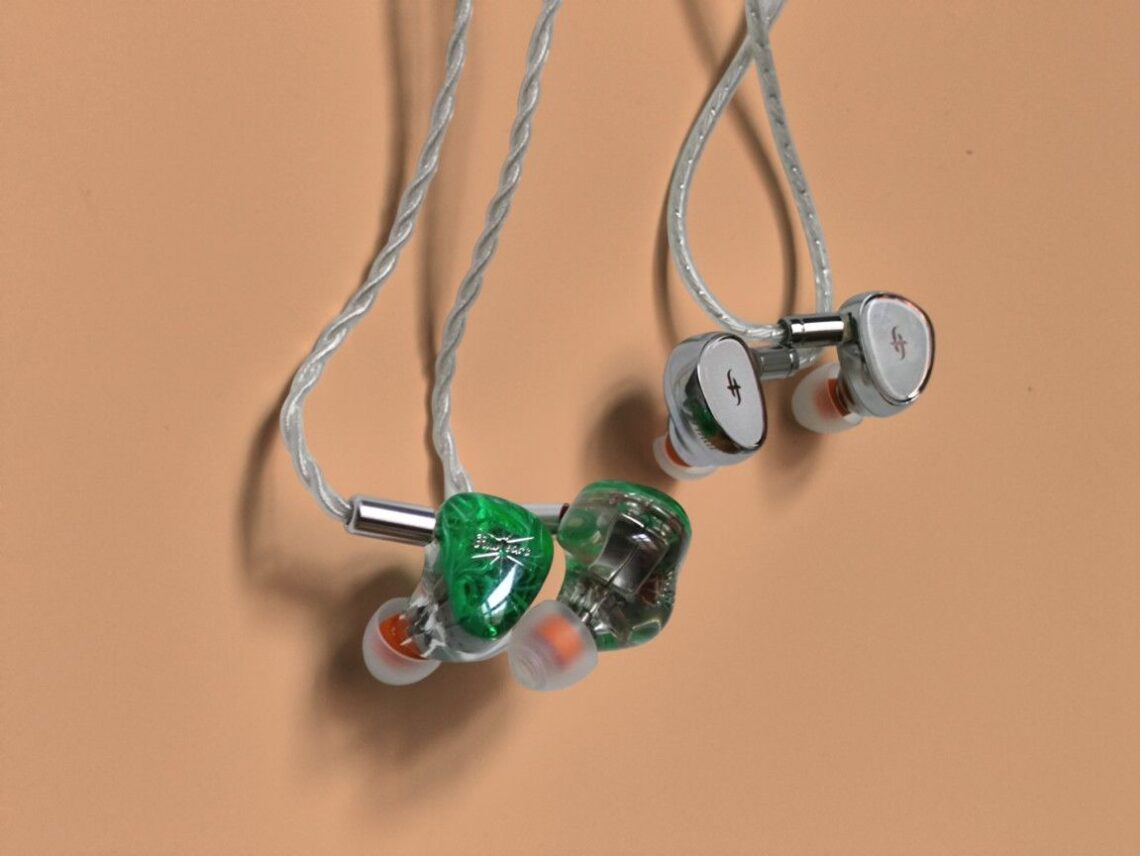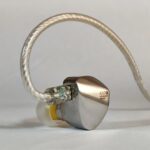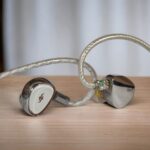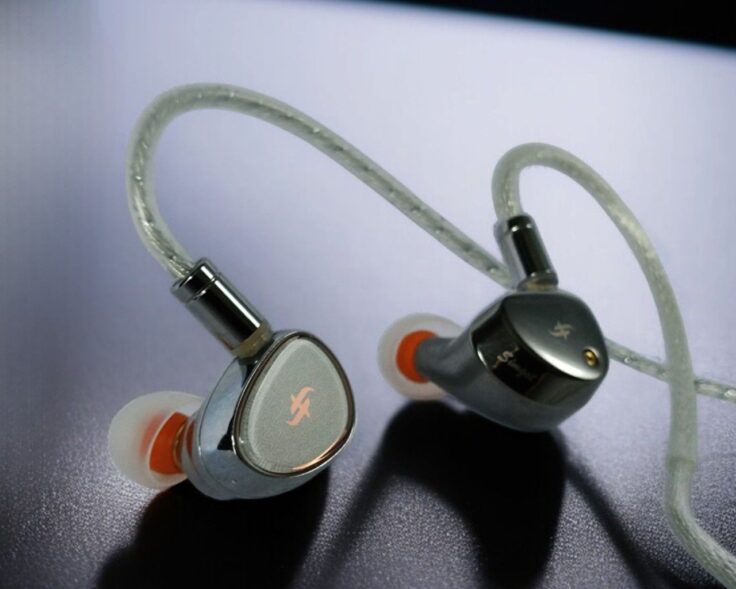This is a comparison between the Kiwi Ears Orchestra Lite and the Simgot EA1000.
For the Orchestra Lite, Kiwi Ears went with no less than 8 Balanced Armature drivers (BA): Two ultra tweeters for the treble, four midrange BA drivers for the mids, and two subwoofer BA drivers for the lows. The Orchestra Lite utilizes a three-way passive crossover. The housing is made of medical-grade resin.
The EA1000 features a single 10mm Dynamic Driver (DD) that takes care of the whole frequency spectrum. It’s set up to work along with a 6mm Passive Radiator (PR), a passive diaphragm that regulates the air volume inside the housing. The EA1000 comes with 3 different types of detachable nozzles that are very effective and give 3 well-implemented tuning possibilities. The golden brass nozzles sit in the middle of the three pairs with regards to the tuning profile, and these are the ones installed in this review.
The EA1000 has a metal housing and is heavier than the Orchestra Lite, but still sits nicely and comfortably in the ear. It’s significantly smaller than the quite large Orchestra Lite.
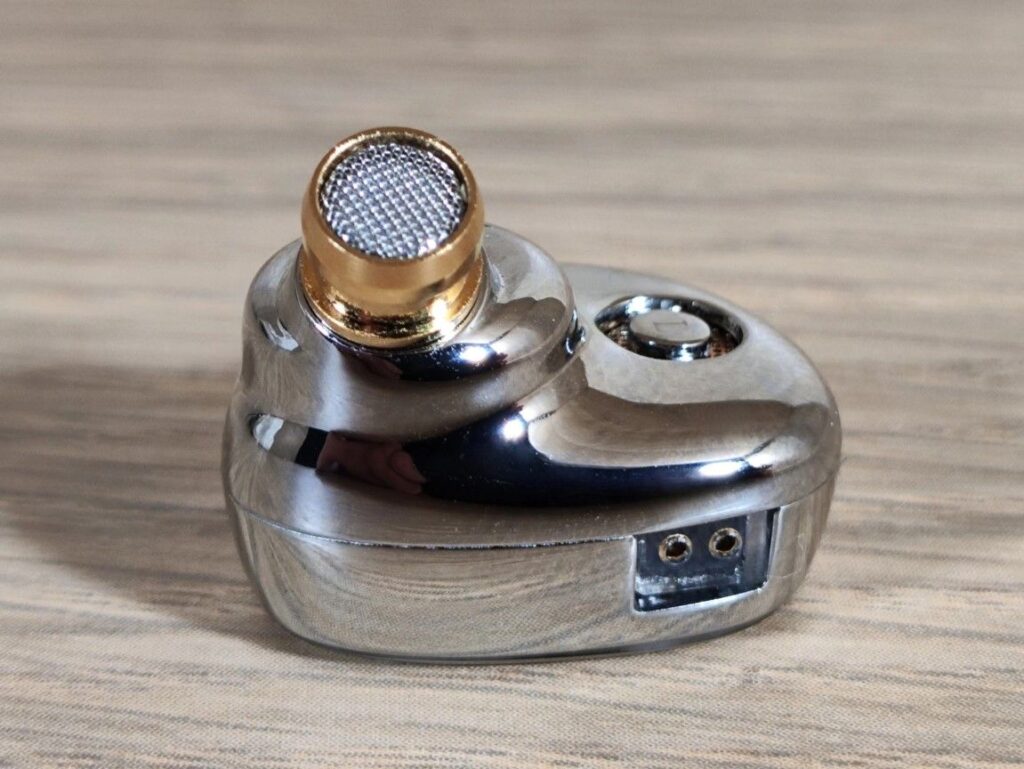
SIMGOT EA1000 SPECIFICATIONS
- Driver: 10mm Dual-Magnetic & Dual-Cavity Dynamic Driver
- 6mm Passive Radiator
- Impedance: 16 Ohms
- Sensitivity: 127 dB/Vrms
- Frequency Response: 10Hz-50kHz
- Detachable Cable: 120 cm Silver-Plated OFC Litz Cable – Earphones connector: 0.78mm 2 pin – Cable termination: 3.5mm
- 3 pairs of tuning nozzles included
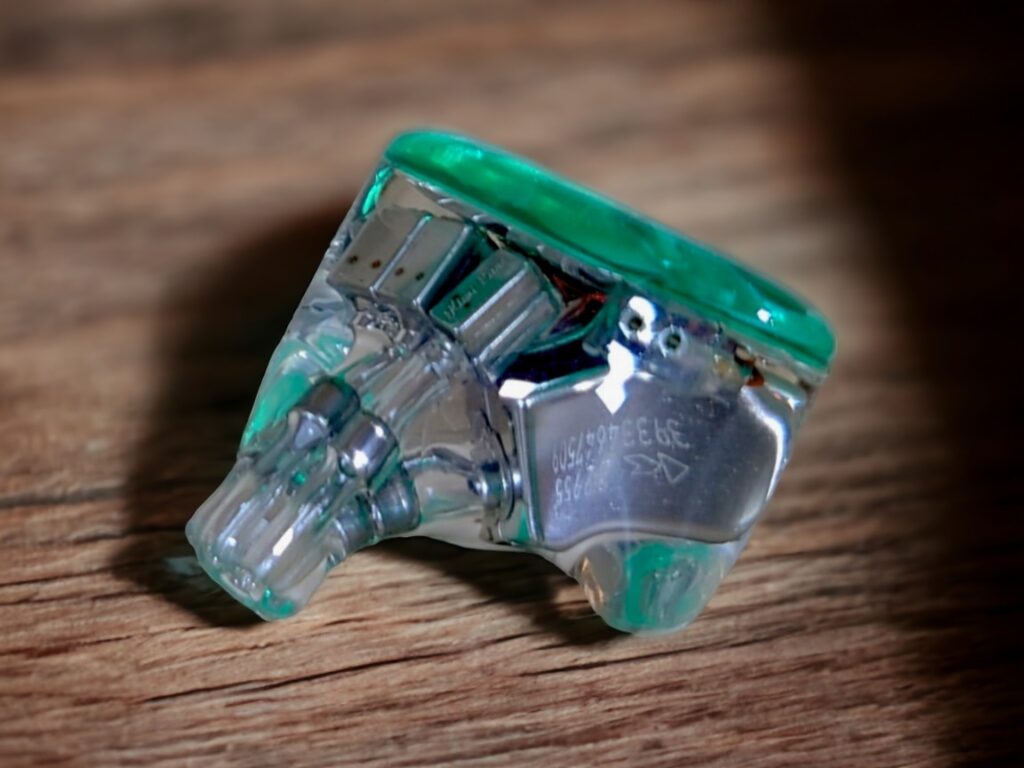
KIWI EARS ORCHESTRA LITE SPECIFICATIONS
- Drivers: Kiwi Ears Customized HI*2+Kiwi Ears Customized MID*4+Knowles LOW*2
- Impedance: 18 ohms
- Sensitivity: 112dB
- Detachable Cable: 1.2 m oxygen-free silver-plated copper – Cable plug IEM: Detachable 0.78mm 2 Pin – Cable termination 3.5mm
COMPARISON
I used the Topping A90 amp and the RME ADI-2 DAC FS as a source.
Gilmanauk by Nils Petter Molvær
This track sounds very well balanced with the Orchestra Lite. The bass is just right, not too much. The trumpet is fantastic and the slide guitar is nice and slidy.
With the EA1000, the bass is slightly stronger, the trumpet is still great, but not as magical sounding as with the Orchestra Lite. The separation is slightly better, there’s a bit more detail. However, there is something about the Orchestra Lite that sounds even more musical.
Mozart Violin Concerto No 4 part III by Hilary Hahn
This really sounds beautiful with the Orchestra Lite. Hilary Hahn’s violin is glowing. It sounds fantastic with the EA1000 too, but the strings have a slightly different tonality. They’re more similar than not, though.
The Water Lets You In by Book of Fears
Basically, they sound almost identical with this song in my setup.
Army of Me by Björk
They’re a bit more different here. The Orchestra Lite sounds brighter and more intense in the mid-range. The vocals especially sound a bit more spacious.
Björk’s voice is not as full sounding with the EA1000, it has less body but more texture, but the EA1000 also sounds really spacious.
That being said, they sound more alike than not.
Ragged Wood by Fleet Foxes
Here, the EA1000 sounds better. The Orchestra Lite sounds good too, there’s just something about the tonal balance of the EA1000 that makes this track extra enjoyable.
As Before by Olga Konkova
This sounds fabulous with the EA1000. The cajôn drum is really punchy, and the vocals and the piano sound beautiful. With the Orchestra Lite, the cajôn lacks body and punch. The vocals sound very nice though, but there’s a slight lack of warmth compared to the EA1000. It sounds brighter and thinner. Still objectively nice, just not as nice as the EA1000.
Dualist by Ola Kvernberg
This contemporary composition sounds good on both, but EA1000 has a fuller-sounding bass. Both handle the complex, busy parts nicely.
Jambi by Tool
The bass drums in the opening sound thunderous with the EA1000, but not overdone. They sound less powerful with the Orchestra Lite and feel a bit lacking. The bass guitar which is playing with the chorus sounds very good and quite full, though. The vocals sound delicious with both.
The Orchestra Lite does a good job, but overall I prefer the EA1000 here.
Young Vivaldi RV 813 III by Ensemble Modo Antiquo
This piece sounds very good on both. There is a slight difference in tonality but they are equally detailed and spacious.
TUNING NOZZLES
The Orchestra Lite has no tuning options. The EA1000, on the other hand, comes with three pairs of different sounding tuning nozzles that are very effective and carry their own distinct sound signature without any loss of qualities such as dynamics and details.
Nozzle 1 (Steel with Red Ring): This is the one attached to the EA1000 when you get it. Offers a bass-heavy sound with powerful yet defined bass, smooth midrange, and detailed but not very bright treble. Not muffled despite its warmth, making it a great bass-heavy IEM.
Nozzle 2 (Brass with Clear Ring): Reduces bass slightly, bringing mids and treble more to the front while retaining warmth. Clearer and tighter sound with more air compared to the red ring nozzle. Preferred as an all-around choice and used in this comparison with the Orchestra Lite.
Nozzle 3 (Steel with Black Ring): Most different from the standard red ring, featuring neutral bass, crisp treble, and upfront midrange. Often my favorite tuning for many tracks, and the most similar to the Orchestra Lite with regards to bass quantity but has an even more energetic treble.
AMPLIFICATION
Both are quite easy to drive and work great with my POCO F5 phone’s headphone jack. They do both scale with better gear like a good USB dongle like the THX Onyx. They sound even better with my desktop rig.
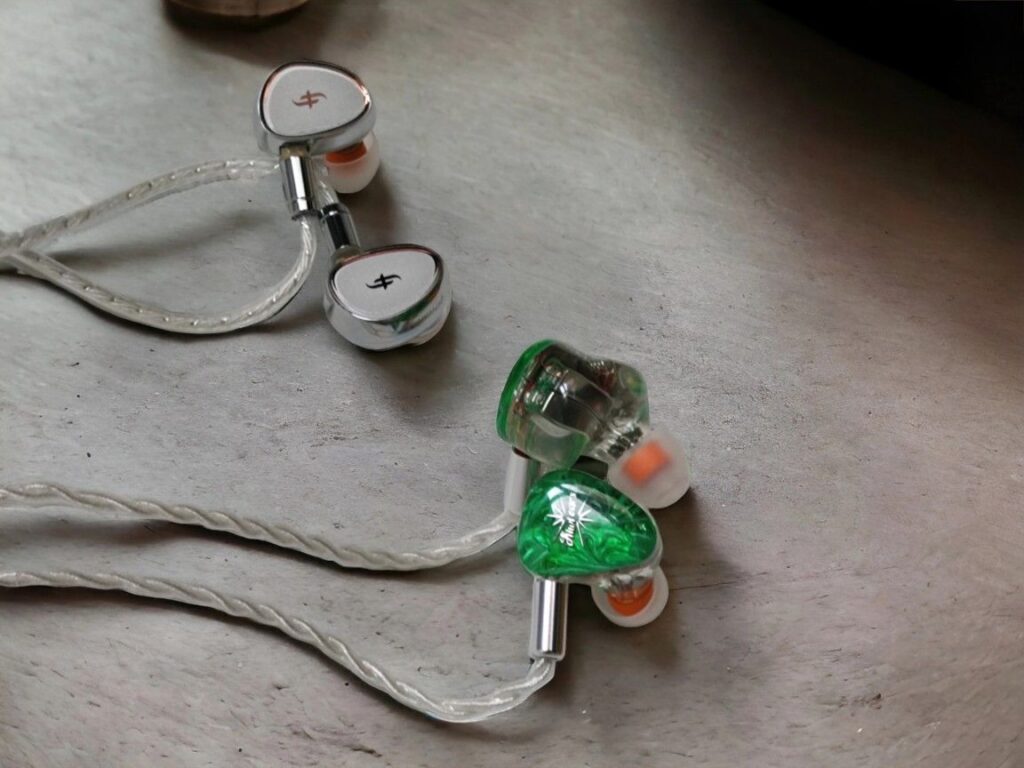
CONCLUSION
Both the Orchestra Lite and the EA1000 are great all-round IEMs. Sound-wise, they are more similar than different. I find that the soundstage and imaging capabilities are completely on par. They both are dynamic sounding, both in terms of macrodynamics and microdynamics. With regards to detail retrieval capabilities, I also find them quite similar and both are very good. When it comes to sound signature, there are some differences. The most obvious is that the EA1000, when using the golden brass nozzle, has more bass. When comparing the Orchestra Lite to the EA1000 with the least bass-heavy nozzle, they become more similar in terms of bass quantity.
The midrange is very good on both. They often sound a bit different, but it’s hard to tell which has the best timbre overall. It varies from track to track. The treble is great on both and sounds very similar.
The big difference here is rather in the build and form factor than in the sound. Also, the EA1000 comes with three effective tuning nozzles.
Buy on Linsoul: Simgot EA1000
Buy on Amazon Simgot EA1000
Buy on Linsoul: Kiwi Orchestra Lite
Buy on Amazon: Kiwi Orchestra Lite
Any purchase you make on Amazon or Linsoul with any of our affiliate links will give us a small provision at no cost to you.
We only get a provision for items that are not returned, so there’s no incentive for us to recommend something that’s not good.
Linsoul : Headphones, Earbuds, Wireless Earbuds, Desktop DAC/AMP, Portable DAC/AMP, Digital Audio Players,
Amazon: Headphones, IEMs, Headphone Amplifiers, Home Audio or Anything else.
.
If you enjoyed this article or other content on The Headphoneer, you might consider leaving a small donation to keep this website up and running. No donation is too small. Thanks for supporting us!
If you like our work please follow us on Instagram, Facebook and Twitter , it will help us grow. Sharing is caring 🙂


